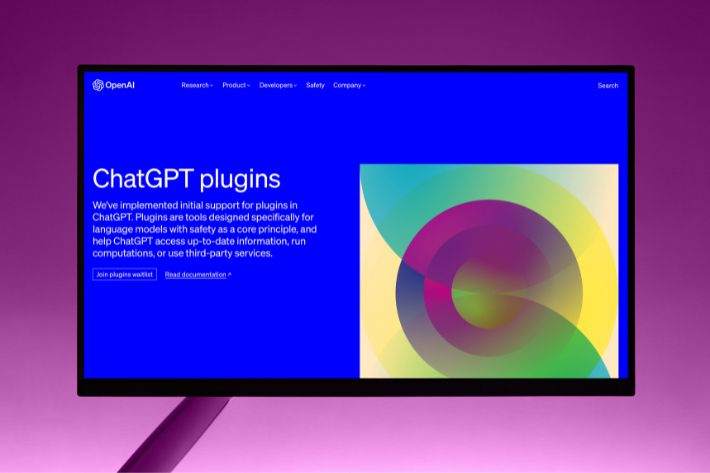In the field of Artificial Intelligence (AI), chatbots have become a popular tool for businesses to interact with their customers. Chatbots are computer programs that use natural language processing (NLP) to simulate human conversations. Chatbots come in two flavours: AI-powered chatbots and rule-based chatbots. In this article, we will explore the differences between GPT-4 chatbots and rule-based chatbots, and how they impact the customer experience.
1. Introduction
Chatbots have been around for quite some time, but recent advances in AI and machine learning have led to the development of more advanced chatbots such as GPT-4. In contrast to rule-based chatbots, GPT-4 uses machine learning to learn from a vast amount of data and can provide more human-like responses to customer inquiries.
2. What are Rule-Based Chatbots
Rule-based chatbots are chatbots that are programmed with specific rules and responses to interact with customers. These chatbots rely on predetermined decision trees, which determine the appropriate response based on the customer’s input. For instance, if a consumer writes “The way do I exchange an item? Rule-based chatbots are often limited in their ability to respond to complex questions or requests.
3. What are AI-Powered Chatbots
AI-powered chatbots use machine learning algorithms and natural language processing to provide more human-like responses to customers. AI-powered chatbots learn from past interactions with customers and can use this knowledge to provide more personalized and relevant responses. These chatbots can understand natural language and are capable of learning from customer interactions to improve their responses over time.
4. How Does GPT-4 Chatbot Work
GPT-4 is an AI-powered chatbot that uses machine learning algorithms to generate responses to customer inquiries. Unlike rule-based chatbots, GPT-4 does not rely on predetermined decision trees to determine the appropriate response. Instead, it uses a large dataset of conversations to generate responses that are more human-like and contextually relevant.
GPT-4 uses a deep neural network that is trained on a vast amount of text data, which allows it to generate responses to customer inquiries. The neural network consists of several layers of nodes, which work together to process and analyze the customer’s input. Once the input is processed, GPT-4 generates a response based on the context of the conversation and the customer’s intent.
5. Advantages of GPT-4 Chatbots over Rule-Based Chatbots
GPT-4 chatbots have several advantages over rule-based chatbots. Firstly, GPT-4 chatbots can understand natural language, which means that they can respond to complex questions or requests from customers. Secondly, GPT-4 chatbots are capable of learning from past interactions with customers, which means that they can provide more personalized and relevant responses over time. Thirdly, GPT-4 chatbots can generate responses that are more human-like and contextually relevant, which can lead to a more positive customer experience.
6. Disadvantages of GPT-4 Chatbots Compared to Rule-Based Chatbots
While GPT-4 chatbots have several advantages over rule-based chatbots, they also have some disadvantages. Firstly, GPT-4 chatbots require a large amount of training data to generate accurate responses. This can be a challenge for businesses that do not have a vast amount of data to train the chatbot. Secondly, GPT-4 chatbots can sometimes generate irrelevant or inappropriate responses due to the complexity of the language model. Finally, GPT-4 chatbots can be expensive to develop and maintain, which can be a barrier to entry for some businesses.
7. GPT-4 Chatbot Use Cases
GPT-4 chatbots can be used in a variety of industries and applications. Among the most typical use scenarios are:
Customer service: GPT-4 chatbots can be used to provide personalized customer service by answering customer inquiries and resolving issues.
Sales and marketing: GPT-4 chatbots can be used to generate leads, answer product inquiries, and provide personalized product recommendations to customers.
Healthcare: GPT-4 chatbots can be used to answer patient inquiries, provide medical advice, and assist with scheduling appointments.
Education: GPT-4 chatbots can be used to assist with online learning, answer student inquiries, and provide personalized feedback to students.
8. Limitations of GPT-4 Chatbot
While GPT-4 chatbots are more advanced than rule-based chatbots, they still have some limitations. Firstly, GPT-4 chatbots may not always provide accurate responses, especially if the input is ambiguous or contextually complex. Secondly, GPT-4 chatbots may struggle with understanding certain accents or dialects, which can lead to misinterpretation of the customer’s input. Finally, GPT-4 chatbots may not be able to handle certain types of data, such as images or videos, which can limit their functionality in certain applications.
9. Conclusion
GPT-4 chatbots are a significant advancement in the field of AI-powered chatbots. They can generate more human-like responses to customer inquiries and provide a more personalized customer experience. However, they also have some limitations, such as the need for a large amount of training data and the potential for generating inappropriate responses. Overall, GPT-4 chatbots have the potential to revolutionize the way businesses interact with their customers, but it is important to consider their limitations and use them appropriately.

At the beginning, I was still puzzled. Since I read your article, I have been very impressed. It has provided a lot of innovative ideas for my thesis related to gate.io. Thank u. But I still have some doubts, can you help me? Thanks.